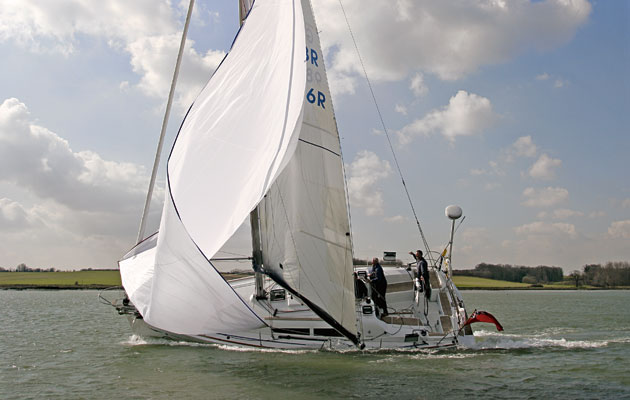The RYA Yachtmaster is a good test of advanced seamanship, but the best sailors know that there will always be lessons to be learned from experience
Yachtmaster Plus – Lessons learned from experience Part 1
Tom Cunliffe
Tom Cunliffe is a Yachtmaster instructor examiner. He looks at how the course has evolved and argues it’s now better than ever
‘The RYA Yachtmaster course is pretty good these days – something you couldn’t always say. When I passed my exam in 1978, I not only had to prove I was a good seaman and a respectable pre-GPS navigator, I also had to demonstrate competence in such antiquities as Morse code and flag signals. Happily, after Bill Anderson took charge of the scheme, things improved rapidly, and today’s RYA/MCA syllabus is founded entirely on seamanlike good sense.
‘One thing that will never alter, however, is the inescapable truth that no sailor ever stops amassing experience. By 1979 I was a Yachtmaster examiner, but looking back I can now clearly see how much I still had to learn. New techniques and equipment arrive on the scene every year, leaving instructors and the syllabus struggling to keep up. You simply can’t include everything, and coming to terms with innovations takes time. GPS was a decade into its adult life before the training scheme agreed a ‘best practice’ for using it. Bow thrusters still have no presence in the boat handling sections. Whipping and splicing have gone, which I believe is a shame, but their basics may be mastered in a working weekend.
‘The deeper mysteries of pure seamanship are different. These cannot be taught by any authorities but time and the old grey ocean herself. A list of topics to be examined helps but, in the end, only experience can make the whole thing look easy. The outstanding collection of material which follows should be required reading for all new Yachtmasters who are stretching out their mileage beyond the required 2,500 nautical miles.’
SEAMANSHIP
Dangers of downwind sailing
Bill Anderson
YM’s seamanship guru Bill Anderson is the former RYA training manager who redesigned the Yachtmaster courses
Downwind sailing is great. The harder it blows, the faster you go – and more you can relax. I think not. If the wind and sea rise, the boat is not obviously labouring and although everything appears well, you may succumb to one of two sudden accidents.
The helmsman may lose concentration and steer into an unexpected gybe or a broach. The boat will be thrown flat on her beam ends and someone may be hurt. Or, you may realise too late that the wind is stronger than you thought and when you need to gybe you don’t have enough strength to haul in the mainsheet.
When Chay Blyth organised a round-the-world race for a fleet of yachts crewed by relative novices, crossing the Southern Ocean against the prevailing wind, the establishment thought he was mad. Actually, he was brilliant. A yacht sailing to windward tells her crew when she is overpressed. She slows down, buries her lee rail, pitches like a bronco. Life becomes unbearable and everyone knows it’s time to shorten sail. A yacht sailing downwind is less communicative.
Rustler’s Hitch
Duncan Wells
Duncan Wells is an RYA instructor and principal of Westview Sailing. He sails a Hallberg-Rassy 352
This is the only knot where no part of the line goes right around whatever you’re attaching it to. A tug on the running end and it becomes untied, but pull as hard as you can on the standing end and it won’t come undone. I often tie a large fender to a coachroof grab rail in case of an emergency. The fender can bounce around and even go overboard but that rustler’s hitch never lets go. Yet, if I need it urgently, that fender is just one flick away from action.








